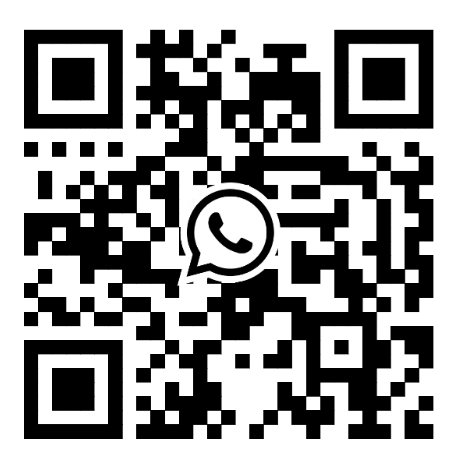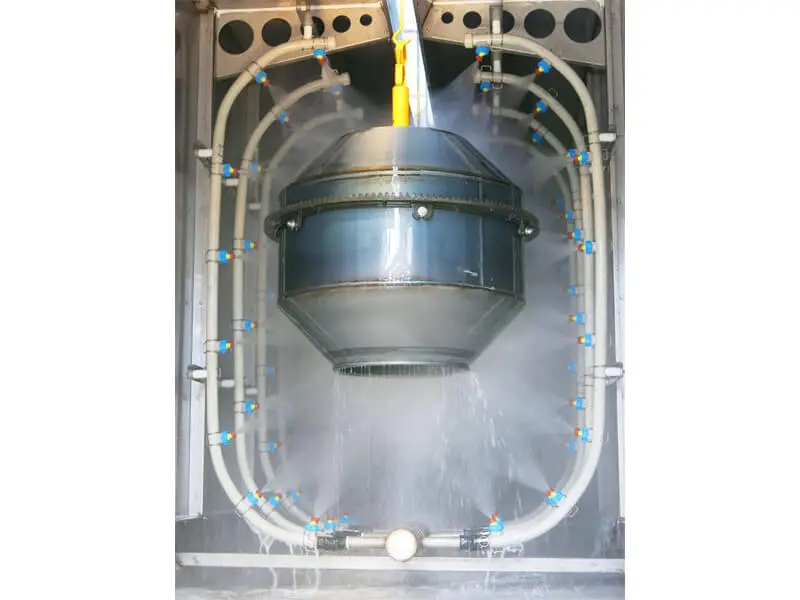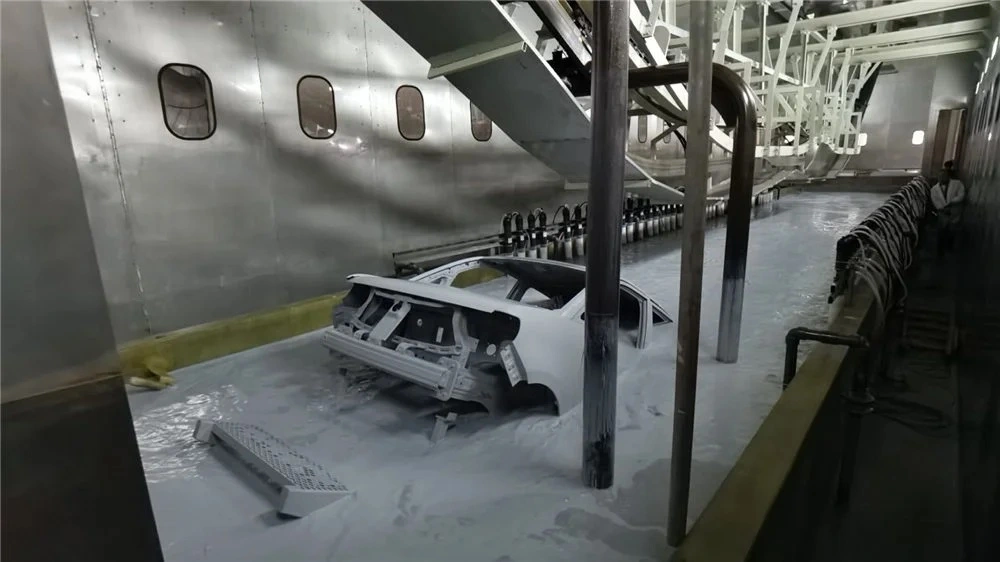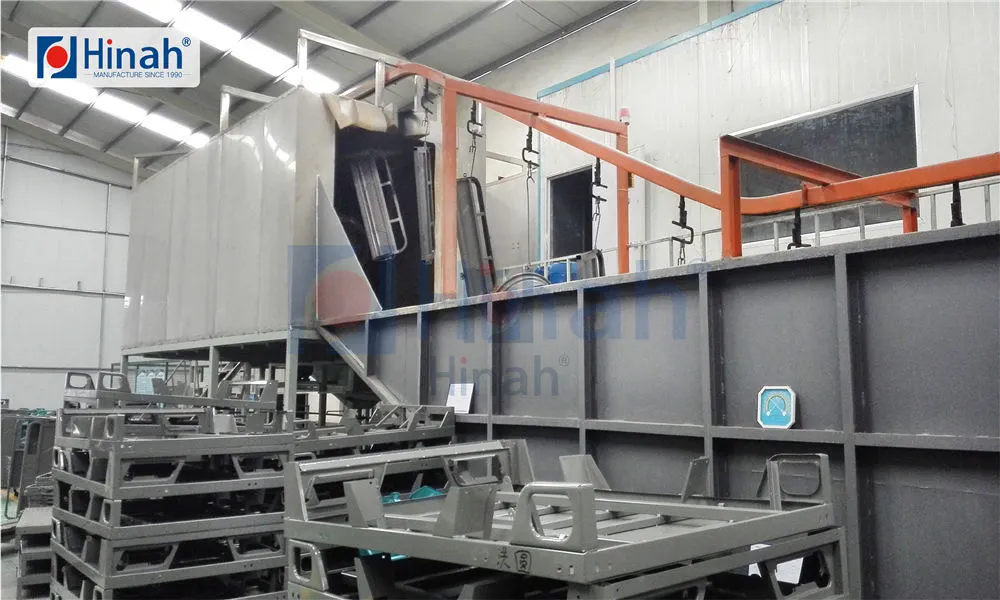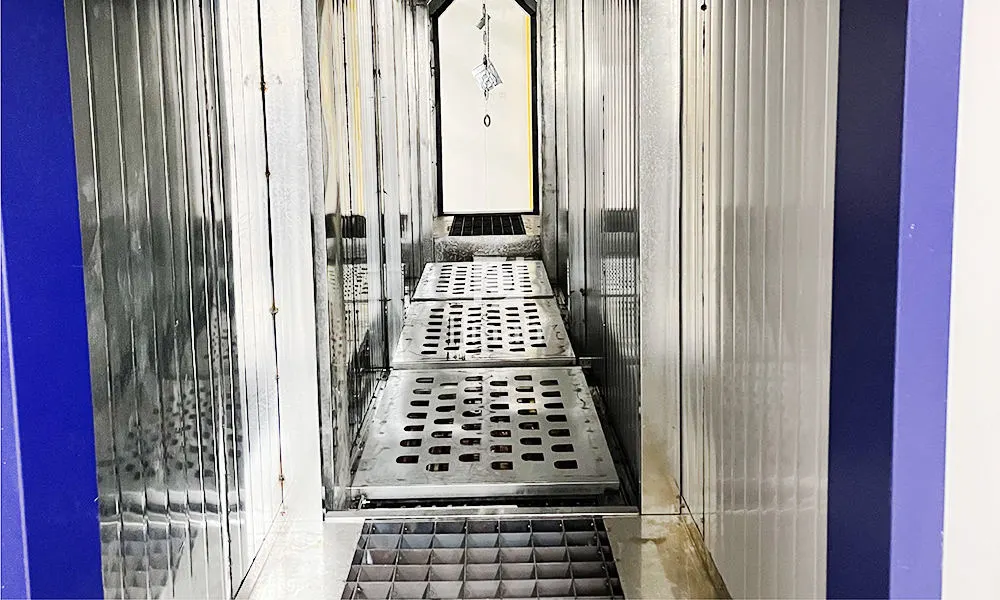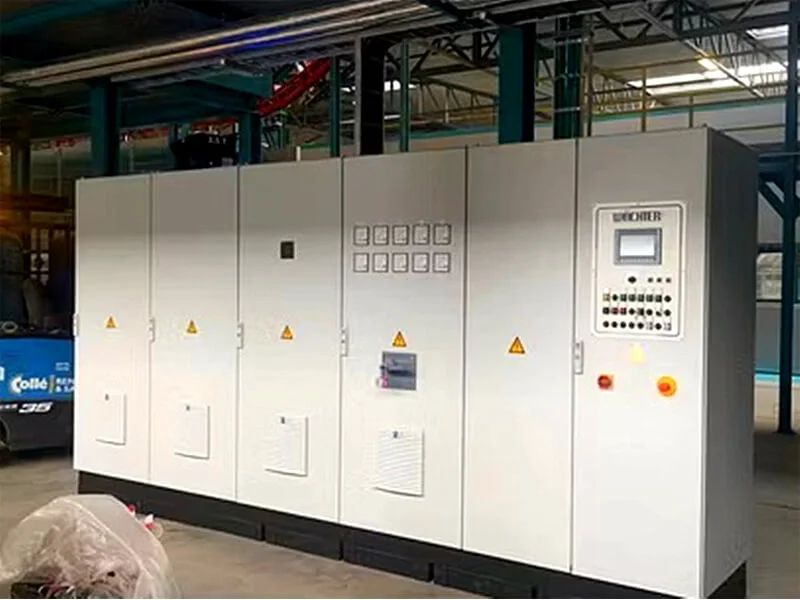In the competitive world of surface finishing, powder coating has emerged as a dominant force, prized for its durability, environmental benefits, superior finish quality, and cost-effectiveness over traditional liquid paints. At the heart of any successful powder coating operation lies the powder coating line. This integrated system transforms raw parts into finished products ready for the market. Whether you're setting up a new facility, upgrading existing capabilities, or simply exploring options, understanding the intricacies of powder coating lines is crucial. This comprehensive guide delves into every aspect, from the core powder coating line process and powder coating line design to selecting the right powder coating line machine, evaluating powder coating line manufacturers, understanding powder coating line layout considerations, navigating powder coating line price factors, and finding the best powder coating line for sale.
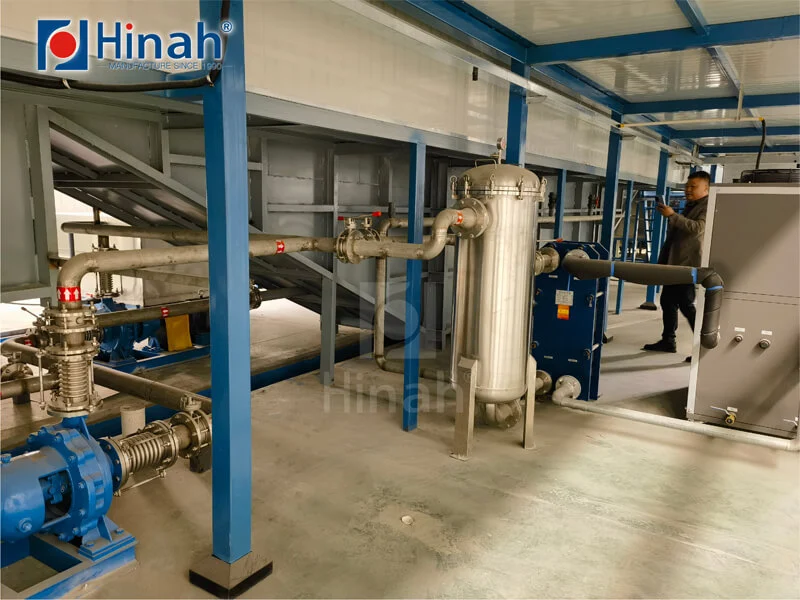
Understanding the Powder Coating Line Process
The powder coating line process is a sequence of carefully controlled stages designed to prepare the substrate, apply the powder evenly, and cure it into a resilient film. A typical line includes:
Pre-treatment: This critical first stage involves cleaning the parts to remove oils, greases, dirt, rust, scale, and other contaminants. Common methods include:
Chemical Spray/Wash: Using alkaline cleaners, acidic derusters, and conversion coatings (like iron phosphate or zinc phosphate for metals) applied via spray tunnels or immersion washers. Rinsing stages follow each chemical application.
Blast Cleaning: For heavy rust, scale, or creating a specific surface profile (anchor pattern) for adhesion, abrasive blasting (sand, grit, shot) is used.
Drying: After pre-treatment rinsing, parts must be thoroughly dried before powder application. This is often done using heated air dry-off ovens (DOO).
Powder Application: The dried parts enter the application booth. Here, electrostatically charged powder particles are sprayed onto the grounded parts using:
Corona Guns: Use a high-voltage electrode to charge powder as it exits the gun.
Tribo Guns: Generate charge through friction within the gun barrel.
Automation: Robotic arms or reciprocators ensure consistent application, especially for high volumes or complex shapes. Manual stations are also common. Overspray powder is recovered via a recovery system (cyclone or cartridge filter) and often recycled.
Curing: The coated parts enter the powder coating line machine known as the curing oven. Heat (typically between 300°F - 450°F / 150°C - 230°C) causes the powder particles to melt, flow together (gel), and chemically cross-link (cure) into a smooth, durable, and continuous film. Curing time depends on the powder type, part mass, and oven temperature profile.
Cooling: Parts exit the oven and cool naturally or via forced air before handling or packaging.
The efficiency and quality of the final product hinge on the precise execution of each step within the overall powder coating line process.
Key Components: Powder Coating Line Machines
A complete powder coating line is an orchestrated symphony of specialized powder coating line machines:
Material Handling System: The backbone moving parts through the line. Options include:
Overhead Conveyors: (I-beam, Power & Free, Monorail) Most common, suitable for diverse part sizes.
Floor Conveyors: (Chain-on-edge, Belt, Roller) Ideal for heavy or awkwardly shaped items.
Manual Trolleys/Racks: For low volume or very large parts.
Pre-treatment System: Spray washers, immersion tanks, or blasting cabinets tailored to cleaning requirements.
Drying Oven (DOO): Heated chamber using gas or electricity to evaporate rinse water.
Application Booth: Enclosed space with:
Powder Application Equipment: Manual and/or automatic spray guns.
Recovery System: Cyclonic separators or cartridge filter modules to reclaim overspray powder.
Powder Feed System: Pumps, hoses, and hoppers delivering powder to the guns.
Proper Lighting & Ventilation: Essential for operator visibility and safety.
Curing Oven: The most critical powder coating line machine for final finish quality. Types include:
Convection Ovens: Heated air circulated by fans (most common).
Infrared (IR) Ovens: Radiant heat for faster cure on thin-gauge parts.
Combination Ovens: Use both convection and IR.
Control System: PLCs or dedicated controllers managing conveyor speed, oven temperatures, timing, and system interlocks.
The selection of each powder coating line machine depends entirely on the specific application, part characteristics, and production goals.
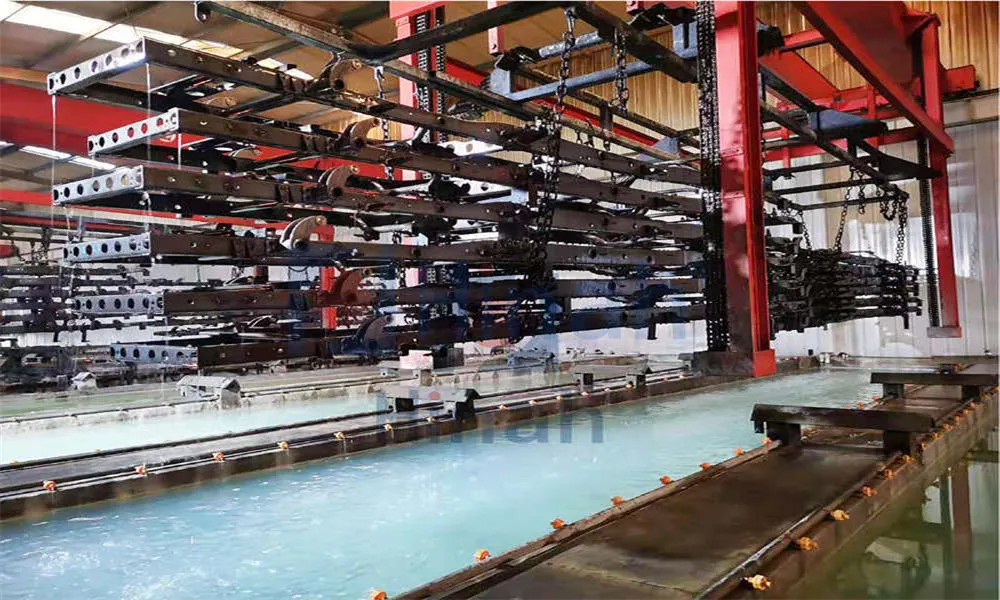
The Art and Science of Powder Coating Line Design
Effective powder coating line design is paramount for operational efficiency, product quality, safety, and long-term profitability. It involves a meticulous balancing act:
Understanding Requirements: Defining part dimensions, weight, material, production volume (parts/hour), required finish quality, powder types used, and available space.
Process Flow Optimization: Mapping the sequence of stages (pre-treatment, dry-off, application, cure, cooling) logically to minimize handling and travel distance. The powder coating line layout must ensure smooth transitions between zones.
Space Planning & Layout: The physical powder coating line layout considers:
Building dimensions, ceiling height, floor load capacity.
Conveyor path routing and elevation changes.
Machine footprints (ovens, washers, booths) and access for maintenance.
Part accumulation zones (if needed).
Utility locations (gas, electricity, compressed air, water, exhaust).
Operator ergonomics and safety zones.
Equipment Sizing & Selection: Matching the capacity and specifications of each powder coating line machine (washer stages, oven size/convection, booth size/recovery efficiency) to the throughput and part characteristics.
Environmental & Safety Compliance: Designing for proper ventilation (booth airflow, oven exhaust), fire suppression systems, spill containment, waste handling, and meeting local regulations.
Future-Proofing: Allowing for potential future expansion, increased throughput, or new part types within the powder coating line design.
A well-executed powder coating line design, resulting in an efficient powder coating line layout, minimizes bottlenecks, maximizes powder transfer efficiency, reduces energy consumption, and ensures consistent quality.
Choosing the right powder coating line manufacturers is a critical investment decision. Consider these factors:
Experience & Reputation: Look for manufacturers with a proven track record in designing and building lines similar to your requirements. Check references and industry standing.
Technical Expertise: Assess their understanding of the powder coating line process, powder coating line design principles, and ability to engineer solutions for your specific challenges.
Product Range & Customization: Do they offer standard lines, or can they provide fully customized solutions? Can they supply all key powder coating line machines (conveyor, pre-treatment, booth, oven, controls) integrated seamlessly?
Quality & Construction: Evaluate the build quality of their equipment (materials, welding, fit/finish). Robust construction ensures longevity and reduces downtime.
Control System Sophistication: Assess the level of automation, monitoring, data logging, and user-friendliness of their control systems.
After-Sales Support: Crucial! Investigate their installation, commissioning, training, maintenance support, and spare parts availability. Global reach might be important.
Sustainability Focus: Manufacturers offering energy-efficient ovens, high-recovery powder systems, and water-saving pre-treatment technologies are increasingly valuable.
Researching and vetting powder coating line manufacturers thoroughly mitigates risks and ensures you partner with a supplier capable of delivering a reliable, high-performing system.
Navigating Powder Coating Line Price Factors
The powder coating line price varies dramatically, ranging from tens of thousands for simple manual lines to millions for fully automated, high-volume systems. Key factors influencing cost include:
Level of Automation: Manual application and handling are cheaper than robotic application and automated loading/unloading. PLC controls add cost over basic timers.
Production Capacity & Line Length: Higher parts-per-hour throughput requires larger/more powerful equipment (bigger ovens, faster conveyors, larger booths, more spray guns), increasing the powder coating line price. Longer lines for complex processes cost more.
Pre-treatment Complexity: A simple 3-stage spray washer costs less than a 7-stage immersion system with multiple rinses and chemical controls. Blast integration adds significant cost.
Oven Technology & Size: Larger ovens, high-temperature capabilities, sophisticated airflow designs, and IR/convection combinations increase costs. Energy efficiency features might have a higher upfront cost but lower operating expenses.
Powder Recovery Efficiency: High-efficiency cartridge recovery systems are more expensive than basic cyclones but offer better powder savings and cleaner operation.
Conveyor System Type & Load: Heavy-duty conveyors for large parts cost more than standard systems. Complex routing adds expense.
Material Handling Integration: Automated loading/unloading, part rotation, or accumulation systems add cost.
Control System Sophistication: Advanced PLCs with HMI touchscreens, remote monitoring, and data logging cost more than basic controls.
Customization Level: Standard lines are cheaper; bespoke powder coating line design for unique parts or space constraints increases engineering and fabrication costs.
Manufacturer & Location: Reputable powder coating line manufacturers with strong engineering and quality control often command premium prices. Geographic location impacts shipping and installation costs.
Installation & Commissioning: Factor in costs for foundation work, utility hookups, installation labor, and commissioning services by the manufacturer.
Obtaining detailed quotes from multiple powder coating line manufacturers, clearly defining your requirements, is essential to understand the powder coating line price for your specific needs. Remember to consider Total Cost of Ownership (TCO), including energy, maintenance, powder usage, and labor, not just the initial purchase price.
Finding the Right Powder Coating Line for Sale
Searching for a powder coating line for sale involves several avenues:
New Equipment from Manufacturers: Directly contacting established powder coating line manufacturers is the primary route for custom or high-capacity lines. They provide design, build, installation, and warranty support.
Industrial Equipment Distributors: Some companies specialize in representing multiple manufacturers, offering a range of standard or semi-custom lines.
Industry Trade Shows: Events like FABTECH or regional surface finishing shows are excellent places to see equipment live, meet powder coating line manufacturers and distributors, and find leads on new or used lines.
When evaluating any powder coating line for sale, clearly define your requirements (volume, part size, finish quality, automation level, budget) and prioritize suppliers or sellers with proven expertise and reliability.
Optimizing Your Powder Coating Line Layout
As mentioned in the design section, the powder coating line layout is critical. Here’s a deeper dive into optimization:
Minimize Conveyor Travel: Design the shortest practical path between stages, reducing cycle time and energy use. Consider vertical movement (e.g., multi-level ovens) if floor space is limited.
Logical Zoning: Group pre-treatment (wet area), dry-off/application/cure (dry area), and cooling/packaging. Prevent cross-contamination (e.g., dust from curing area affecting application booth).
Efficient Booth Placement: Position the application booth for easy operator access (for manual stations) and proximity to powder storage/mixing. Ensure adequate space around the booth for maintenance and gun cleaning.
Oven Positioning: Locate curing ovens considering heat dissipation, exhaust requirements, and proximity to the application booth to minimize powder contamination before cure. Allow ample space for oven insulation and ductwork.
Material Flow: Design the powder coating line layout for smooth part movement. Avoid sharp conveyor turns that can cause parts to swing or collide. Include buffer zones if production rates vary between stages.
Utility Routing: Plan for efficient runs of electrical, gas, compressed air, water, and drain lines to each machine. Centralized control panels improve accessibility.
Maintenance Access: Ensure clear access aisles around all equipment for routine maintenance, repairs, and part loading/unloading. Don't cram machines together.
Safety & Ergonomics: Incorporate safety barriers, emergency stops, proper lighting, ventilation, and ergonomic workstations for operators.
A thoughtfully planned powder coating line layout directly impacts productivity, safety, and operational costs.
A powder coating line is a significant investment that forms the core of a modern, efficient, and environmentally responsible finishing operation. Success hinges on a deep understanding of the powder coating line process, meticulous powder coating line design, strategic selection of powder coating line machines, partnering with reputable powder coating line manufacturers, and optimizing the powder coating line layout. While the powder coating line price is a major consideration, focusing on Total Cost of Ownership (TCO), quality, reliability, and future flexibility is paramount for long-term profitability.
Whether you are actively searching for a powder coating line for sale or planning a future expansion, taking a holistic view – from process fundamentals through to equipment selection and layout optimization – will empower you to make informed decisions. By investing in the right powder coating line solution, you position your business to deliver superior finishes, maximize efficiency, reduce waste, and thrive in the competitive marketplace. The journey starts with knowledge, and this guide provides the foundation.
FAQ
➤What is a powder coating line?
Powder coating lines are used to coat metal materials by powder paint. The materials placed on the conveyor line are first passed through the surface treatment washing line to be cleaned from oil, dirt, and rust.
➤What is a coating line?
Coating line means a series of one or more coating applicators and any associated drying area and/or oven wherein a coating is applied, dried, and/or cured. A coating line ends at the point where the coating is dried or cured, or prior to any subsequent application of a different coating.
➤What are the three types of powder coating?
Types of powder coating
There are three main categories of powder coatings: thermosets, thermoplastics, and UV curable powder coatings. Thermoset powder coatings incorporate a cross-linker into the formulation.
➤What is the purpose of powder coating?
Powder coated products are more resistant to diminished coating quality as a result of impact, moisture, chemicals, ultraviolet light, and other extreme weather conditions. In turn, this reduces the risk of scratches, chipping, abrasions, corrosion, fading, and other wear issues. It's tough.

